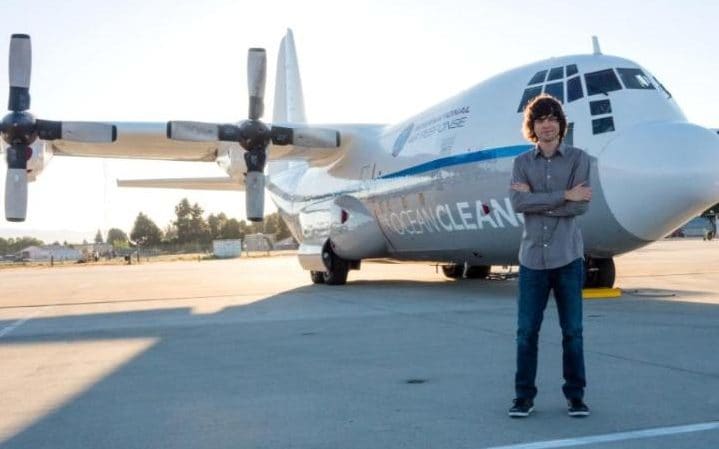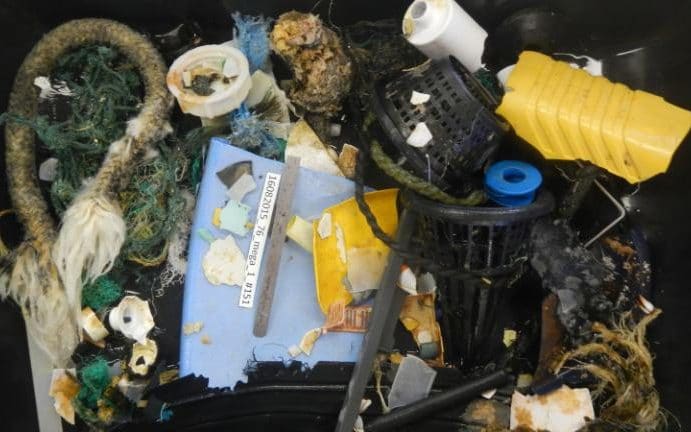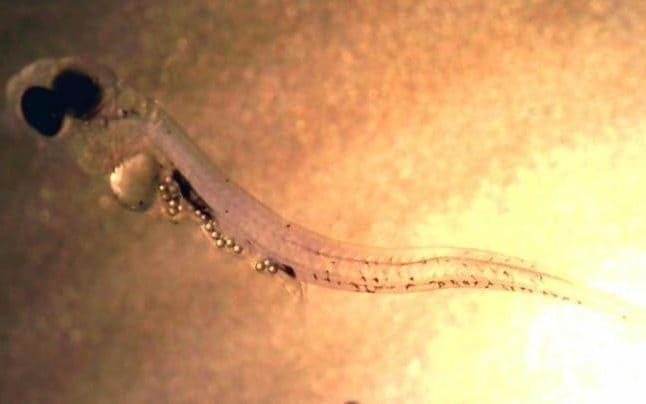The Great Pacific Garbage Patch is a myth; observations have not found any "garbage island"

The Great Pacific Garbage Patch was presented as a floating island of plastic rubbish stretching across the surface of the ocean in an area comparable to India — a symbol of human abuse of the planet. But the images obtained from the first aerial survey of this area did not reveal anything so exciting.
Instead of a giant cover of plastic containers, fishing nets and debris, fragments were found scattered over a large area, among which only 1,000 large objects met across thousands of square kilometers.
Although members of The Ocean Cleanup , a charitable society, say they found more plastic in the ocean than they expected, experts say the garbage patch has always been a myth, not confirmed by any scientific research, and distracting the public from the real problem - a dangerous amount of plastic microparticles water.
')

Images that often illustrate the “garbage patch” are actually taken from the coast of Manila in the Philippines.
Dr. Angelicque White, associate professor at Oregon State University, who studied in detail the “garbage patch”, says: “The use of the term is confusing. I would say that this is a myth and a wrong name. It is not visible from space. There are no islands of garbage. It's just some plastic soup drifting in the ocean. Plastic in the ocean really is. The works checked by experts say that the highest concentration of microparticles of plastic is three pieces the size of an eraser per cubic meter. Continuing use of terms like “plastic island”, “about the size of Texas” are hyperboles, which, in my opinion, undermine the credibility of people. We need to focus on reducing the flow of debris entering the oceans. ”
The Garbage Spot is also known as the Pacific Garbage Vortex, and was first described by the captain of an American vessel, Charles Moore, in 1997, when he was going from Hawaii to southern California. He claims that he stumbled upon "plastic ... floating everywhere, as far as the eye could see."
Plastic is supposedly collected in this place because of the circular ocean currents that collect garbage along the coasts and bring them to the center. It is believed that things take six years to reach this place from the coast of the United States, and one year from Japan.

Plastic floating in the ocean, discovered by The Ocean Cleanup team
The size of the center of the garbage patch is estimated at one million square kilometers, and the periphery extends to another 3.5 million square kilometers.
However, in 2008, Dr. White’s team dragged the net behind the ship and found that most of the plastic is contained in small pieces, which is actually more dangerous because it can be eaten by animals that hunt plankton.
Professor Tamara Galloway from Exeter University says: “There are many misconceptions about the Great Pacific Garbage Patch,” including its size and appearance. Some believe that this is a giant floating island of garbage, but it is not. Garbage there may be approximately 77,000 pieces per sq. Km. By comparison, coastal areas are more polluted. Some such sites, for example, can contain up to 4 million pieces of garbage per square kilometer. Garbage spots are important because being at a great distance from the source of plastic, thousands of kilometers, show how mobile and omnipresent our garbage is. ”
The Ocean Cleanup is an organization from the Netherlands about to remove and recycle garbage islands. “Aerial surveillance — our last mission — brings us one step closer to clearing the Pacific spot,” says Boyan Slat, director of the organization.

"The first finds of the expeditions emphasize the urgency with which it is necessary to solve the problem of plastic accumulation in the world's oceans."
An organization trying to clear the oceans has developed extensive floating barriers that must filter out debris from the currents for later collection. Barriers are going to build by 2020.
Dr. White says the cleaning scheme was not thought out well enough. “One of the most frightening prospects of this plan is that any large-scale filtration will remove plankton, which plays a vital role in the ecology of the ocean surface,” she says.

Larva perch with small beads in the stomach
Source: https://habr.com/ru/post/398641/
All Articles